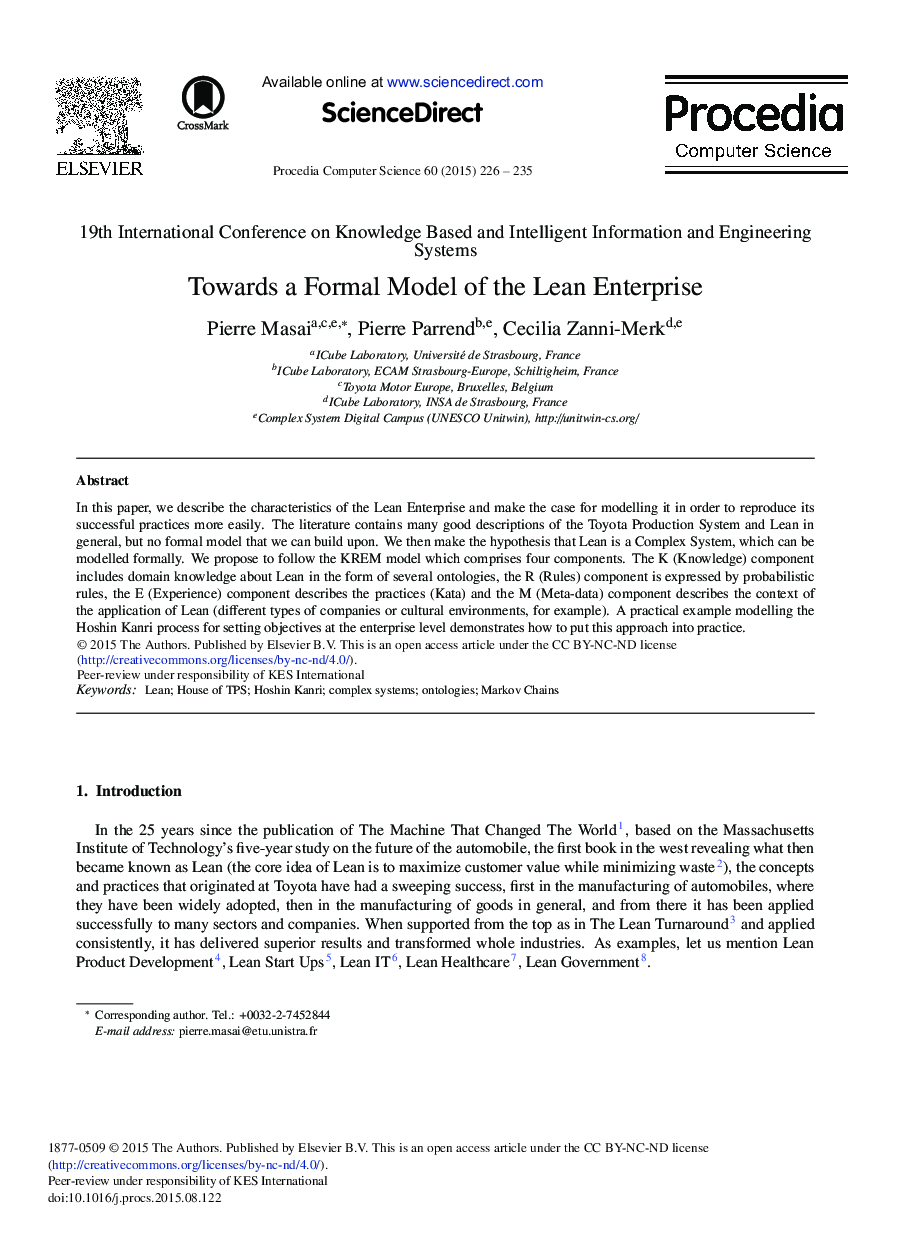| Article ID | Journal | Published Year | Pages | File Type |
|---|---|---|---|---|
| 489548 | Procedia Computer Science | 2015 | 10 Pages |
In this paper, we describe the characteristics of the Lean Enterprise and make the case for modelling it in order to reproduce its successful practices more easily. The literature contains many good descriptions of the Toyota Production System and Lean in general, but no formal model that we can build upon. We then make the hypothesis that Lean is a Complex System, which can be modelled formally. We propose to follow the KREM model which comprises four components. The K (Knowledge) component includes domain knowledge about Lean in the form of several ontologies, the R (Rules) component is expressed by probabilistic rules, the E (Experience) component describes the practices (Kata) and the M (Meta-data) component describes the context of the application of Lean (different types of companies or cultural environments, for example). A practical example modelling the Hoshin Kanri process for setting objectives at the enterprise level demonstrates how to put this approach into practice.
